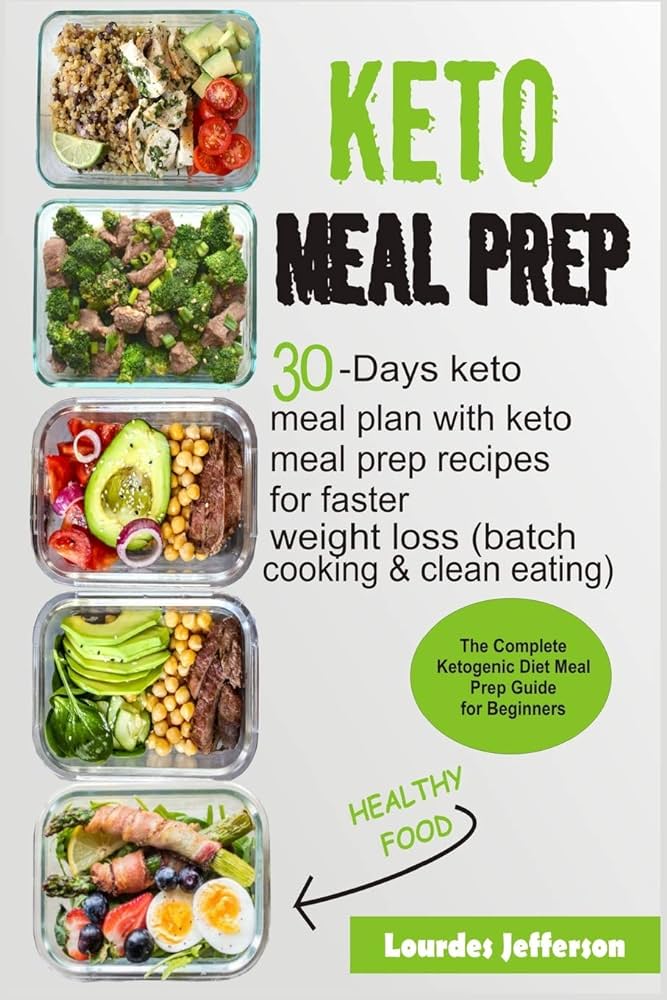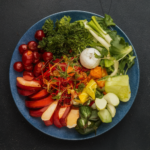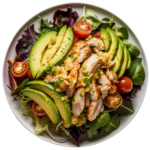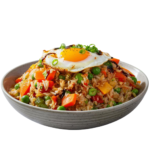Are you looking for an effective way to lose weight and improve your nutrition? The keto meal plan may be just what you need! This low-carb, high-fat eating plan can help you achieve your health goals and feel your best.
Our comprehensive guide will provide you with everything you need to know about following the keto diet. From understanding the basics to planning your meals and grocery shopping, we’ve got you covered.
Key Takeaways
- The keto meal plan is a low-carb, high-fat eating plan that can help with weight loss and improved health.
- Our guide provides everything you need to know about the keto diet, including meal planning and grocery shopping.
- There are plenty of delicious keto-friendly recipes for breakfast, lunch, and dinner, as well as snacks and desserts.
- Staying motivated and overcoming challenges is important for sustaining a keto lifestyle.
- The keto meal plan is a great option for those looking to improve their nutrition and overall well-being.
Understanding the Ketogenic Diet
Before jumping into the keto meal plan, it’s crucial to understand the basics of the ketogenic diet. Also known as the keto diet, this eating plan focuses on low-carb, high-fat foods that signal the body to enter a state of ketosis. During this metabolic process, the body burns fat for energy instead of relying on carbohydrates.
The ketogenic diet has numerous health benefits, including weight loss, improved blood sugar control, and increased energy levels. By following a keto diet, you can achieve sustainable weight loss without feeling deprived or hungry.
At the core of the ketogenic diet is macronutrient ratios. On a keto meal plan, your diet should consist of:
| Macronutrient | Percentage of Daily Calories |
|---|---|
| Fat | 70-75% |
| Protein | 20-25% |
| Carbohydrates | 5-10% |
Restricting carbohydrates and increasing fat consumption may seem counterintuitive, but it’s essential for reaching a state of ketosis. Carbohydrates are the primary source of energy for the body. However, when carbohydrate intake is reduced to a minimal level, the body switches to using fat as energy instead.
Understanding the importance of macronutrient ratios and how they contribute to ketosis is the key to success on a ketogenic diet. With the right guidance and knowledge, you can unlock the transformative benefits of a low-carb, high-fat lifestyle.
Planning Your Keto Meals
Meal planning is at the heart of a successful keto diet. It helps you stay on track, maintain a well-balanced diet, and ensures you never run out of delicious keto-friendly options.
Here are some tips to create a meal plan that works for you:
1. Set Goals
Start by setting goals for yourself, whether you want to lose weight, build muscle, or simply feel more energized. Having clear objectives helps you identify what you need to focus on and motivates you to achieve your desired outcomes.
2. Calculate Your Macros
Understanding your body’s macros needs is essential for creating a successful keto meal plan. Use an online calculator to determine your daily macros goals based on your age, weight, and activity level. This will help you plan your meals accordingly.
3. Plan Your Meals
Choose keto-friendly recipes that satisfy your macros goals and complement your taste preferences. Incorporating a variety of protein, healthy fats, and low-carb vegetables ensures you’re consuming a balanced diet that supports your health.
Need some inspiration? Check out some of these keto-friendly recipes:
| Meal Type | Recipe |
|---|---|
| Breakfast | Avocado and Egg Toast |
| Lunch | Greek Salad with Grilled Chicken |
| Dinner | Beef and Broccoli Stir-Fry |
| Snack | Almond Butter Protein Balls |
| Dessert | Keto Chocolate Mousse |
4. Meal Prep
Meal prep is a game-changer when it comes to sticking to a keto diet. By preparing your meals in advance, you avoid the temptation of reaching for unhealthy options during the day. Batch cooking and storing leftovers make mealtime quick and easy.
5. Stay Flexible
Staying flexible is essential in creating a sustainable meal plan. Don’t be afraid to experiment with new flavors and ingredients. Find what works for you and keep it interesting.
With these tips, you can create a well-balanced keto meal plan that supports your health goals and satisfies your taste buds. Start your keto journey today with delicious, wholesome, and satisfying meals.
Grocery Shopping for Keto
When it comes to maintaining a successful keto lifestyle, grocery shopping can make or break you. With our comprehensive keto grocery list, you’ll have everything necessary to stock up on the right foods and ensure your meal plan is a success.
What to Look For
When shopping for keto-friendly foods, focus on whole, unprocessed foods that are low in carbs and high in healthy fats. This includes:
- Meat and seafood
- Low-carb vegetables such as spinach, kale, and broccoli
- Nuts and seeds
- Healthy fats like olive oil, coconut oil, and avocado oil
Avoid processed foods, sugar, and high-carb foods like bread, pasta, and rice. Be sure to carefully check nutritional labels to ensure the foods you’re selecting are low-carb and fit into your daily meal plan.
Keto Grocery List
Our keto grocery list provides you with everything you need for successful meal planning and grocery shopping. Use it as a guide to navigate the grocery store:
| Food Group | Foods to Include |
|---|---|
| Meat and Seafood | Beef, chicken, pork, salmon, tuna |
| Dairy | Cheese, butter, heavy cream, Greek yogurt |
| Low-Carb Vegetables | Spinach, broccoli, cucumber, cauliflower |
| Fats and Oils | Olive oil, coconut oil, avocado oil, ghee |
| Nuts and Seeds | Almonds, walnuts, chia seeds, flaxseeds |
| Beverages | Water, coffee, tea, bone broth |
| Snacks | Pork rinds, cheese crisps, beef jerky, nuts |
| Sweeteners | Stevia, erythritol, monk fruit |
With our keto grocery list in hand, you’ll have everything necessary to make low-carb grocery shopping a breeze and set yourself up for keto success.
Breakfast Ideas for a Keto Lifestyle
Kick-start your day with delicious and healthy breakfast options that are perfect for a keto lifestyle. These keto breakfast recipes will keep you feeling full and energized throughout the morning, while also supporting your low-carb goals.
1. Scrambled Eggs with Avocado
Upgrade your classic scrambled eggs with the addition of creamy avocado and diced tomato. This nutrient-packed breakfast is easy to make and incredibly satisfying, providing you with healthy fats, protein, and fiber.
2.Keto Pancakes
Who says you can’t enjoy pancakes on a keto diet? These fluffy, almond flour-based pancakes are drizzled with sugar-free syrup and a dollop of whipped cream for a decadent breakfast treat.
3.Bacon-Wrapped Asparagus
For a savory start to your day, try wrapping asparagus spears in crispy bacon and baking them in the oven. This keto-friendly breakfast is bursting with flavor and nutrients, making it a perfect choice for busy mornings.
4. Chocolate Chia Seed Pudding
Satisfy your sweet tooth with this creamy chia seed pudding that features rich chocolate flavor and healthy ingredients. Made with coconut milk, cocoa powder, and chia seeds, this breakfast is low in carbs and high in fiber to keep you full until lunch.
| Ingredients | Instructions |
|---|---|
| 1 ripe avocado, diced | 1. In a bowl, whisk eggs with salt and pepper. |
| 3 eggs | 2. In a non-stick pan, heat olive oil over medium-high heat. |
| 1 small tomato, diced | 3. Add the eggs and cook, stirring occasionally, until they begin to set. |
| Salt and pepper, to taste | 4. Add diced avocado and tomato to the pan and stir until eggs are fully cooked. Serve hot. |
| 1 cup almond flour | 1. In a bowl, whisk together almond flour, baking powder, and salt. |
| 2 tablespoons coconut flour | 2. In another bowl, whisk together eggs, almond milk, and vanilla extract. |
| 1 teaspoon baking powder | 3. Add wet ingredients to dry ingredients and whisk until smooth. |
| 1/4 teaspoon salt | 4. Heat a non-stick pan over medium heat and add butter. Once hot, add batter in small amounts and cook for 2-3 minutes on each side until golden brown. |
| 2 large eggs | 5. Serve hot with sugar-free syrup and whipped cream, if desired. |
| 1/2 cup chopped cooked bacon | 1. Preheat oven to 400°F and line a baking sheet with parchment paper. |
| 12 asparagus spears | 2. Wrap each asparagus spear with a piece of bacon and place on the baking sheet. |
| 1 tablespoon olive oil | 3. Drizzle with olive oil and bake for 12-15 minutes until bacon is crispy and asparagus is tender. |
| 1 cup coconut milk | 1. Combine all ingredients in a blender and blend until smooth and creamy. |
| 1/4 cup cocoa powder | 2. Pour mixture into a jar or bowl and refrigerate for at least 2 hours. |
| 2 tablespoons chia seeds | 3. Enjoy cold with your favorite toppings, such as fresh berries or chopped nuts. |
“With these delicious keto breakfast recipes, you can start your day on the right foot and feel satisfied and energized all morning long.”
Lunch and Dinner Recipes for Keto Success
Following a low-carb plan does not mean missing out on delicious meals. Our diverse collection of keto-friendly recipes will spice up your lunch and dinner. Our recipes are perfect for keto enthusiasts looking to enjoy a mouthful of flavor. Our lunch and dinner offerings include:
Salads:
Enjoy a refreshing meal with a low-carb salad. Our favorites include the savory spinach and feta salad and the classic Caesar salad with a keto twist.
Meat Dishes:
Our meat dishes are packed with flavor and protein. Try our mouthwatering steak au poivre or the delicious rosemary and thyme roasted chicken for a satisfying meal.
Soups and Stews:
Nothing beats a hearty soup or stew, especially during colder months. Our spicy beef chili and creamy broccoli and cheddar soup are warming and satisfying.
Pasta Alternatives:
Craving pasta? Our low-carb alternatives, such as zucchini noodles or spaghetti squash, are the perfect solution for a satisfying meal without the carbs.
Whether you’re a fan of spicy, savory, or sweet, we have a recipe that’s perfect for you. Try our keto lunch or dinner recipes today and enjoy a delicious and healthy meal.
Snacks and Desserts That Fit the Keto Bill
Crushing those midday cravings and satisfying your sweet tooth can still be achieved on a keto diet. Don’t worry, you don’t need to give up indulgent treats. We’ve compiled a list of keto-approved snacks and desserts that are sure to hit the spot.
Keto Snacks
Snacking is made easy with these tasty low-carb options:
| Snack | Net Carbs |
|---|---|
| Almonds (1/4 cup) | 3 grams |
| Celery sticks (1 cup) with almond butter (1 tbsp.) | 4 grams |
| Beef jerky (1 oz.) | 3 grams |
Keto Desserts
You can still satisfy your sweet tooth while remaining in ketosis. Check out these mouth-watering desserts:
| Dessert | Net Carbs per Serving |
|---|---|
| Keto brownies | 2 grams |
| Keto cheesecake | 3 grams |
| Keto peanut butter cups | 3 grams |
Enjoy these snacks and desserts guilt-free while staying true to your keto diet.
Staying Motivated and Overcoming Challenges
Starting a new way of eating can be challenging, and the keto diet is no different. It’s important to stay motivated and focused to achieve your goals. Here are some practical tips to help you overcome common challenges:
Set Realistic Goals
When starting a keto diet, it’s important to set realistic goals based on your lifestyle, preferences, and health status. Setting small and achievable goals can help you stay motivated and focused along the way.
Find a Support System
Having a support system can make a world of difference when it comes to staying motivated. Connect with others who are also following a keto diet, join online communities, and share your progress and challenges.
Experiment with Recipes and Flavors
Following a restricted diet can be challenging when it comes to meal ideas. Experiment with keto-friendly recipes and flavors to keep your meals interesting and exciting.
Practice Mindful Eating
Mindful eating can help you stay aware of your hunger cues, prevent overeating, and stay on track with your goals. Take the time to savor and enjoy your meals, and avoid distractions while eating.
Track Your Progress
Tracking your progress can help you stay motivated and celebrate your successes along the way. Keep a food journal, track your weight and measurements, and take progress photos to see how far you’ve come.
| Challenge | Solution |
|---|---|
| Cravings for High-Carb Foods | Find keto-friendly alternatives for your favorite high-carb foods. |
| Low Energy Levels | Increase your fat intake, stay hydrated, and make sure you’re getting enough electrolytes. |
| Difficulty Eating Out | Research keto-friendly options at restaurants ahead of time, or bring your own keto-friendly snacks or meals. |
| Feeling Overwhelmed or Discouraged | Remember why you started and celebrate small victories along the way. Connect with a supportive community to stay motivated. |
By following these tips and strategies, you can stay motivated and overcome common challenges on your keto journey. Remember to take it one day at a time, celebrate your successes, and stay focused on your goals.
Conclusion
Congrats on taking the first step towards embracing a low-carb lifestyle with our Keto Meal Plan! We hope this guide has provided you with the information and inspiration you need to achieve your health and wellness goals. Remember, while the transition to a ketogenic diet may be challenging initially, it’s ultimately worth it for the numerous health benefits and delicious meals.
Stay motivated, experiment with recipes, and don’t be too hard on yourself if you slip up occasionally. With dedication and commitment, you can make keto an effortless and enjoyable way of life. So, what are you waiting for? Start cooking, shopping, and savoring all the wonders of the Keto Meal Plan today!
FAQ
What is a ketogenic diet?
A ketogenic diet is a low-carb, high-fat eating plan that promotes a state of ketosis in the body. This metabolic state allows the body to burn fat for fuel instead of carbohydrates, leading to weight loss and increased energy levels.
How does a ketogenic diet work?
A ketogenic diet works by drastically reducing carbohydrate intake and replacing it with fat. This reduction in carbs forces the body to enter a state of ketosis, where it starts breaking down fat for energy. By limiting carbohydrates, the body is encouraged to burn fat, resulting in weight loss.
Are there any health benefits of a ketogenic diet?
Yes, there are several health benefits associated with a ketogenic diet. It has been shown to aid in weight loss, improve insulin sensitivity, reduce inflammation, increase mental clarity, and promote heart health.
What can I eat on a ketogenic diet?
On a ketogenic diet, you can consume high-fat foods such as meats, fish, eggs, avocados, cheese, and healthy oils. You should limit your intake of carbohydrates, including grains, sugars, and starchy vegetables.
Can I have snacks and desserts on a ketogenic diet?
Yes, you can enjoy snacks and desserts while following a ketogenic diet. There are many delicious options that are low in carbs and high in fat, such as nuts, seeds, dark chocolate, and sugar-free desserts made with low-carb sweeteners.
Is it necessary to meal plan on a ketogenic diet?
Meal planning is highly recommended on a ketogenic diet. It helps ensure that you have a well-balanced diet and makes it easier to stick to your low-carb eating plan. Planning your meals in advance also saves time and reduces the chance of making unhealthy food choices.
What should I look for when grocery shopping for a ketogenic diet?
When grocery shopping for a ketogenic diet, focus on buying foods that are high in healthy fats, moderate in protein, and low in carbohydrates. Look for items such as grass-fed meats, wild-caught fish, low-carb vegetables, and full-fat dairy products.
How can I stay motivated on a ketogenic diet?
Staying motivated on a ketogenic diet can be challenging, but there are several strategies you can use. Set realistic goals, track your progress, find a support system, and reward yourself for reaching milestones. It may also help to educate yourself about the benefits of a ketogenic diet and remind yourself of your reasons for choosing this lifestyle.
What are some common challenges of following a ketogenic diet?
Some common challenges of following a ketogenic diet include cravings for carbohydrates, social situations that involve carb-heavy foods, and the need for careful meal planning. Overcoming these challenges requires commitment, preparation, and finding alternative strategies to satisfy cravings and navigate social settings.










.png)

.jpeg)












